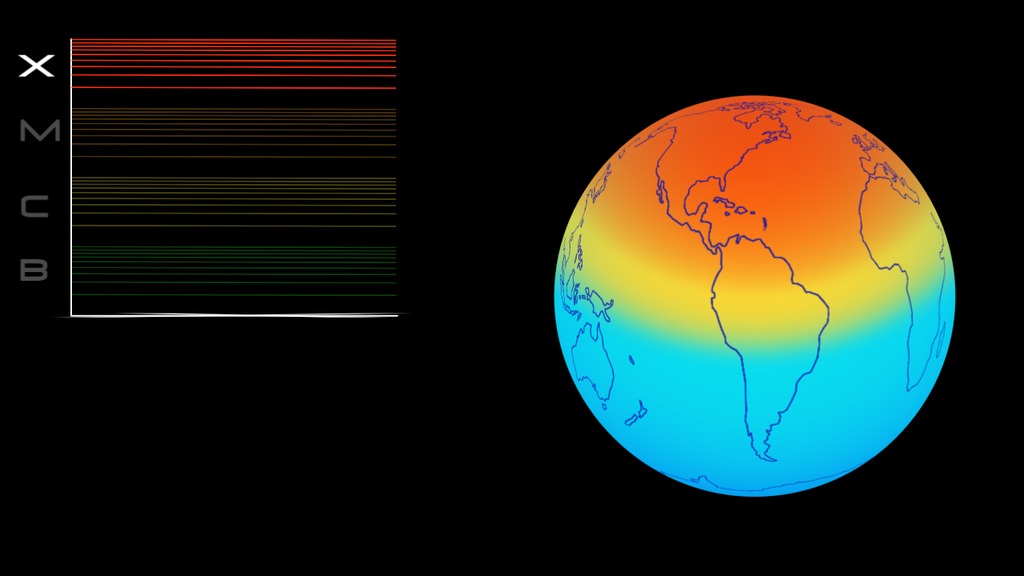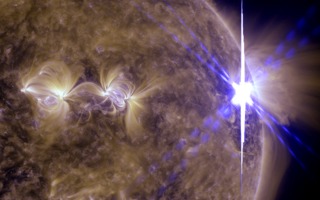Looking Back: The Record Flare for Solar Cycle 24
On August 9, 2011 at 3:48 a.m. EDT, the sun emitted an Earth-directed X6.9 flare, as measured by the NOAA GOES satellite. These gigantic bursts of radiation cannot pass through Earth's atmosphere to harm humans on the ground, however they can disrupt the atmosphere and disrupt GPS and communications signals. In this case, it appears the flare is strong enough to potentially cause some radio communication blackouts. It also produced increased solar energetic proton radiation — enough to affect humans in space if they do not protect themselves.
As of March 2014, this flare is the largest of solar cycle 24.
Here are the raw images used in creating the components in Sun Unleashes X6.9 Class Flare on August 9, 2011
The X6.9 flare as seen by SDO/AIA in 13.1nm filter.
The X6.9 flare as seen by SDO/AIA in 17.1nm filter.
The X6.9 flare as seen by SDO/AIA in 19.3nm filter.
The X6.9 flare as seen by SDO/AIA in 30.4nm filter.
The X6.9 flare as seen by SDO/AIA in 33.5nm filter.
Credits
Please give credit for this item to:
NASA's Scientific Visualization Studio, the SDO Science Team, and the Virtual Solar Observatory.
-
Animator
- Tom Bridgman (Global Science and Technology, Inc.)
-
Producer
- Scott Wiessinger (USRA)
-
Project support
- Laurence Schuler (ADNET Systems, Inc.)
- Ian Jones (ADNET Systems, Inc.)
-
Writer
- Scott Wiessinger (USRA)
-
Scientist
- William D. Pesnell (NASA/GSFC)
Missions
This page is related to the following missions:Datasets used
-
AIA 304 (304 Filter) [SDO: AIA]
ID: 677This dataset can be found at: http://jsoc.stanford.edu/
See all pages that use this dataset -
AIA 193 (193 Filter) [SDO: AIA]
ID: 679This dataset can be found at: http://jsoc.stanford.edu/
See all pages that use this dataset -
AIA 171 (171 Filter) [SDO: AIA]
ID: 680This dataset can be found at: http://jsoc.stanford.edu/
See all pages that use this dataset -
AIA 131 (131 Filter) [SDO: AIA]
ID: 730This dataset can be found at: http://jsoc.stanford.edu/
See all pages that use this dataset -
AIA 335 (335 Filter) [SDO: AIA]
ID: 748This dataset can be found at: http://jsoc.stanford.edu/
See all pages that use this dataset
Note: While we identify the data sets used on this page, we do not store any further details, nor the data sets themselves on our site.
Release date
This page was originally published on Friday, May 16, 2014.
This page was last updated on Wednesday, May 3, 2023 at 1:50 PM EDT.

